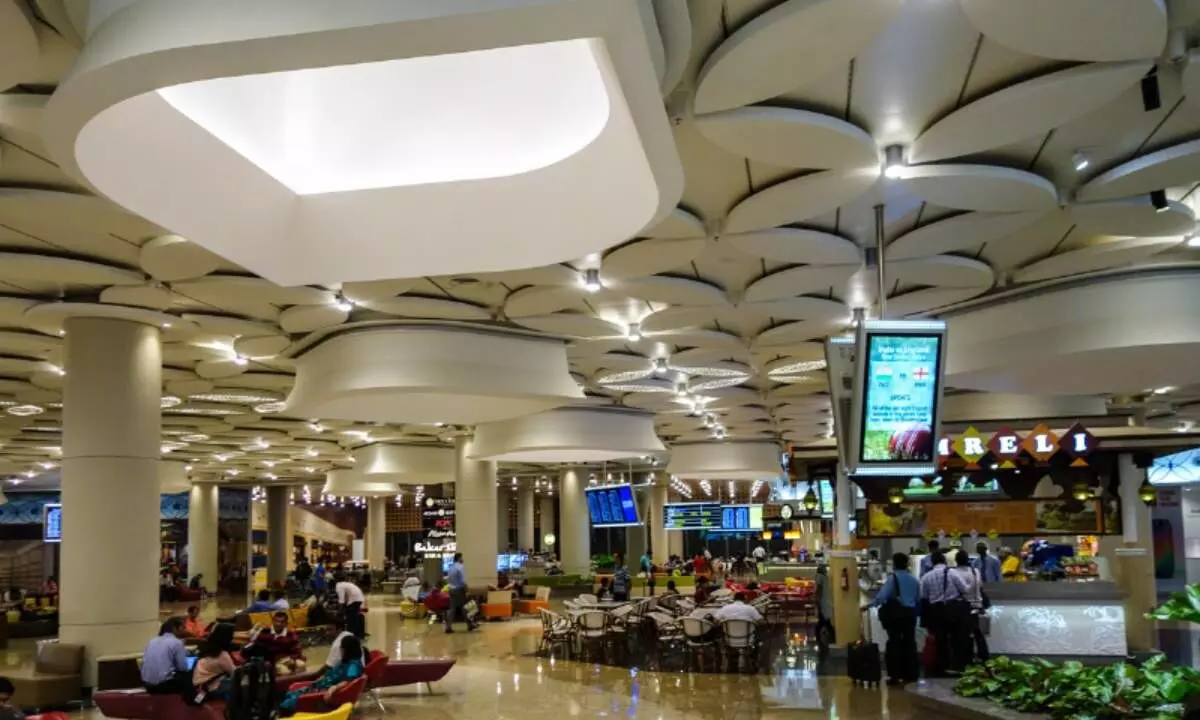Airports can be made profitable by wooing foreign airlines with competitive landing fees and incentives
The revenue model of airports can be classified into aeronautical revenue and non-aeronautical revenue
image for illustrative purpose

The latest data shared during the monsoon session of the Parliament shows that only 15% of the airports in India made profits in the last financial year. Out of the 125 domestic airports operated by the Airports Authority of India (AAI), only 18 recorded profits, while 15 neither made profits nor incurred losses. However, this was an improvement from the previous year when only 11 AAI-operated airports were profitable.
The data also showed that out of the 14 airports operated in the public-private partnership (PPP) mode, only three were profitable. The government has taken steps to improve the profitability of AAI-operated airports by reassessing costs and implementing measures such as increasing non-aeronautical revenue, optimizing operational costs, and implementing automation of airport systems.
According to Waseem Ahmed Khan, senior industry analyst, aerospace and defense, with Frost & Sullivan, operating an airport is a capital-intensive business that requires significant investment in strategic areas such as the development of new terminal buildings and digital transformation.
The revenue model of airports can be classified into aeronautical revenue and non-aeronautical revenue. Aeronautical revenue includes fees collected directly from airlines, while non-aeronautical revenue includes sources such as rent from duty-free shops, parking charges and advertising.
Out of the 18 profitable AAI airports, only 11 had profits exceeding Rs 10 crore with the Kolkata airport reporting the highest profit of Rs 482.30 crore. Among the 14 airports operated under PPP mode, only three—Bengaluru, Cochin and Hyderabad—were profitable.
To make airports profitable, experts suggest attracting more foreign airlines by offering competitive landing fees and creating incentives. They also recommend attracting domestic airlines by highlighting the benefits of government schemes like UDAN-RCS. Additionally, investing in digital transformation like self-bag drop and self-service kiosks, can enhance passenger experience and productivity.
Experts believe that with the recent aircraft orders by Air India and IndiGo, there is hope for increased passenger traffic and profitability for airports in the near future.
AAI is also optimising operational costs through utility enhancements — such as LED replacements and solar panel installations — while also implementing automation of airport systems and outsourcing of non-core activities, to achieve cost-effective management.
The economics of airport infrastructure is such that average total costs decline with an increase in market size up to a point – this refers to economies of scale. As such, a significant proportion of smaller airports operate at a loss. This challenge was only exacerbated through the pandemic.
Based on data from the ACI Airport Economics Survey, 97% of airports with less than one million passengers operated at a loss in 2019. The propensity to reach profitability increases with airport size thereafter.
The reason smaller airports remain in operation hinges on the fact that they contribute to the local, social and economic development of their surrounding communities. Because of the positive externalities that they generate, government intervention in the form of subsidies or grants helps to cover the shortfall or deficits.
In the case of major airport networks, which consist of a portfolio of airports under a single operator in a given jurisdiction, profitable airports in the network, tend to cross-subsidise or compensate the net losses of smaller airports.
Small, emerging, and regional airports play a vital role in feeding traffic into hub airports for onward journeys to other major national and international destinations, while also generating traffic that assures sustainability of larger airports within the network.
Airport traffic development has, of course, important social and economic benefits in terms of job creation and the economic vitality for communities where smaller airports may be located.
Analysis of the ACI World Airport Service Quality (ASQ) data shows that an increase of 1% in the number of passengers leads to a growth of non-aeronautical revenue (NAR) ranging from 0.7% to 1%; An increase of 1% in the size of the commercial area leads to a growth of NAR of 0.2% and an increase of one per cent in global passenger satisfaction (as defined in the ASQ Survey) generates, on average, a growth of NAR of 1.5%. In recent years, airports started diversifying revenue sources by using innovative strategies like increasing rental rates, bidding for concessionaires and generating opportunities in other commercial avenues such as parking and retail. Today, an average of 39.4% of global airports’ revenues is derived from non-aeronautical sources.
(Source: 2019 ACI Airport Economics Report).

